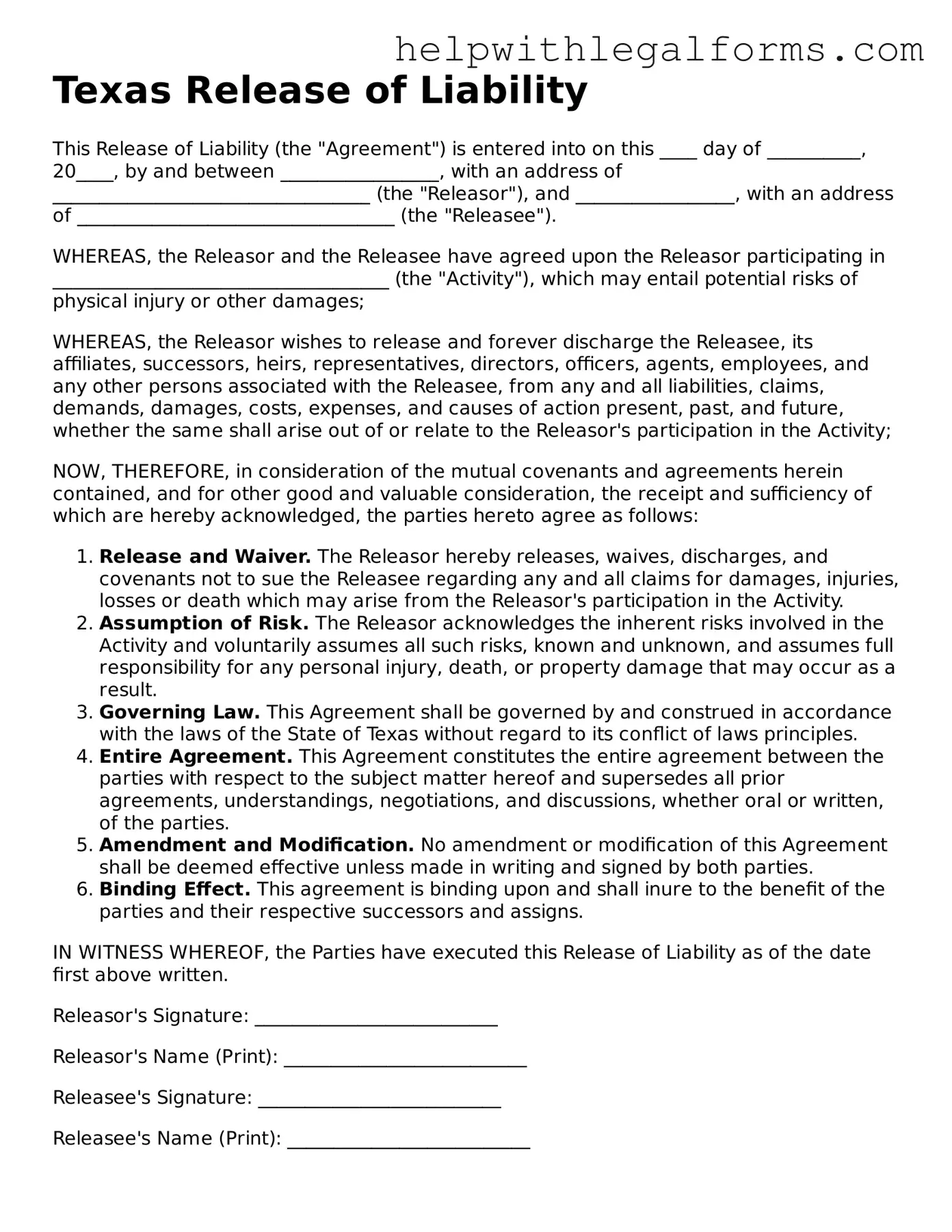What is a Texas Release of Liability form?
A Texas Release of Liability form is a document that an individual signs to waive their right to make a legal claim against another party, typically in connection with a specific event, activity, or transaction. This form is often used in activities that involve a higher risk of injury or in situations where one party wishes to protect themselves from potential legal action.
When should one use a Texas Release of Liability form?
This form should be used whenever individuals or entities engage in activities or transactions that could potentially lead to personal injury or legal disputes. Examples include, but are not limited to, events such as sports activities, extreme adventures, property use agreements, and service provisions that involve physical risks.
Is a Texas Release of Liability form legally binding?
Yes, a Texas Release of Liability form, when properly executed, is legally binding. It must be voluntarily signed by the person releasing their rights, should include clear language regarding the rights being waived, and the individual should understand the risks involved. It’s important to ensure the form complies with Texas laws to be considered valid.
Can a minor sign a Texas Release of Liability form?
In Texas, minors cannot legally sign a Release of Liability form. A parent or legal guardian must sign the form on behalf of the minor. The signature of the parent or guardian acts to release or waive rights in connection with the minor’s participation in any activity or use of services.
What information must be included in the form?
The form must include the full names of all parties involved, a detailed description of the activity or transaction, specific risks associated with it, and clear language that the signer is releasing the other party from liability. It should also contain the date of signing and, ideally, a witness or notary acknowledgment to reinforce its validity.
How can one ensure the form is compliant with Texas law?
Ensuring compliance involves several factors, such as using clear and specific language that does not violate public policy, accurately detailing the activity and associated risks, and following proper execution procedures. Consulting with a legal professional experienced in Texas law can provide guidance and help ensure that the form meets all legal requirements.
Can a signed Texas Release of Liability form be revoked?
Once a Texas Release of Liability form is signed, it generally cannot be revoked, as it is a binding agreement. However, there could be exceptions if the form was signed under duress, fraud, or misrepresentation. In such cases, legal counsel should be sought to explore potential remedies.
Are there any activities for which a Release of Liability form cannot be used in Texas?
Yes, Texas law does not allow Release of Liability forms for activities that involve a significant public interest, such as certain essential services, or where the activity or service is being offered in a manner that violates law or public policy. It is advisable to consult with a legal professional to understand limitations specific to your situation.
What happens if a Texas Release of Liability form is not used?
Not using a Texas Release of Liability form may expose individuals or entities to legal risks and potential lawsuits. Without this form, there is no formal acknowledgment by the participants of the risks involved or agreement to waive rights to sue. This could result in legal battles and financial liabilities if accidents or disputes arise related to the activity or transaction.
